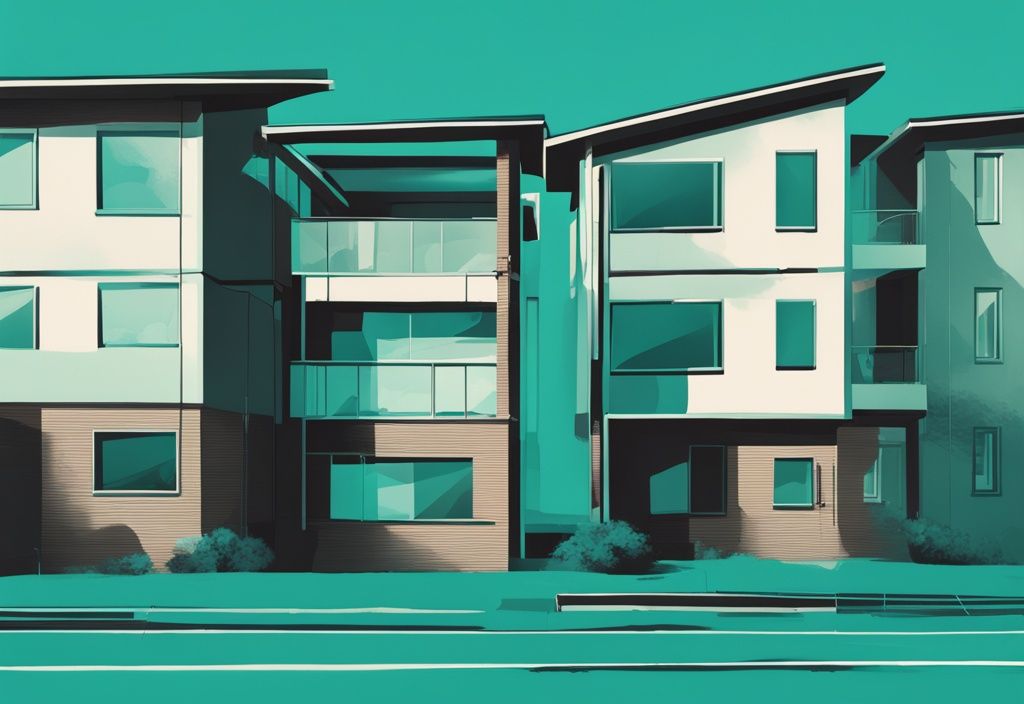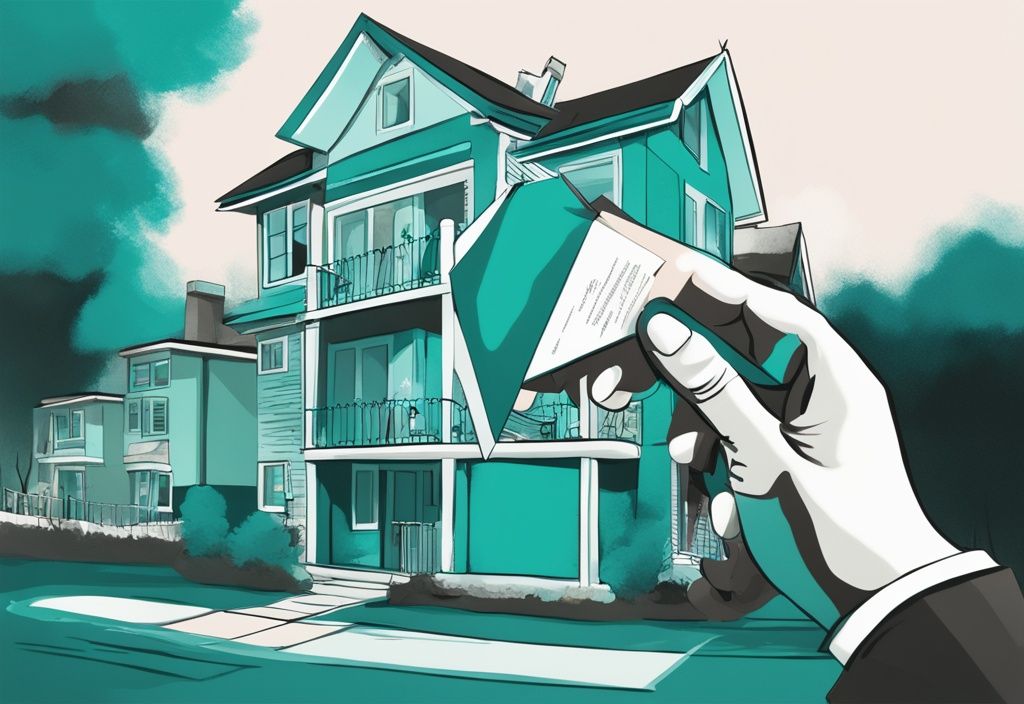Ever found yourself feeling more like you’re camping in the wild than living comfortably in your rented property? You might be a victim of constructive eviction – an issue that’s sadly all too common. As a seasoned real estate expert, I’ve seen where landlords, either through neglect or deliberate actions, can turn a living space into a nightmare.
In this article, we’re going to delve into the nitty-gritty of constructive eviction. We’ll clarify the differences between constructive and actual eviction and walk you through the legal landscape in an easy-to-understand way. Essentially, constructive eviction is a must-know for both tenants seeking justice and landlords striving to avoid disputes.
So whether you’re holding a lease or a rental contract, sit back, relax, and ready yourself for a simplified journey into an intricate aspect of property law. There’s no need for law degrees here, just real, down-to-earth advice to guide you properly.
An Introduction to Constructive Eviction
Constructive eviction is a crucial concept in real estate that balances tenants’ rights and landlords’ responsibilities, ensuring fair treatment and proper maintenance of rental properties.
What is Constructive Eviction?
Constructive eviction in real estate happens when a landlord’s actions or neglect make it nearly impossible for a tenant to use and enjoy their rented space, turning the property uninhabitable. Imagine you’re renting a cozy apartment, but suddenly, the heating stops working during winter, or there’s a persistent water leak the landlord refuses to fix. These situations can drive a tenant to the brink, forcing them to leave, even though they weren’t physically evicted.
Unlike a classic eviction where a landlord legally removes a tenant through court proceedings, constructive eviction is more about the tenant feeling compelled to move out due to the hostile living conditions. It stems from the principle of the implied covenant of quiet enjoyment, meaning tenants should enjoy their space without disruption. So, if the landlord neglects essential repairs or utilities like water and electricity, they’re breaching this covenant, leading to constructive eviction.
Constructive Eviction vs. Actual Eviction
Actual eviction is a more straightforward process where the landlord uses legal means, often involving court orders, to remove a tenant from the property. Picture a landlord taking legal steps to kick out a tenant who hasn’t paid rent; it’s clear-cut and formal.
Now, let’s contrast that with constructive eviction. Here, there’s no court order or physical removal. Instead, the conditions imposed by the landlord become intolerable – like a never-fixed plumbing issue that results in mold or an ongoing noise problem from denied repair of sound insulation – pushing tenants to leave voluntarily. While actual eviction revolves around legal actions, constructive eviction in real estate focuses on the tenants’ decision to vacate due to the unsuitable living conditions created by the landlord’s inaction or harmful actions. In essence, where actual eviction is about official legal routes, constructive eviction relies on the premise of unbearable living circumstances forcing a tenant’s hand. To fully understand real estate agreements, it’s also crucial to know about other terms, such as what an option fee in real estate is and how it affects transactions.
Both highlight significant tenant-landlord dynamics, but they operate on very different mechanisms and effects.
The Legal Aspect of Constructive Eviction
Exploring constructive eviction requires understanding several legal principles and responsibilities. Let’s dive into what this concept entails, from the implied covenant of quiet enjoyment to the steps a tenant must take to establish a constructive eviction claim.
Legal Basis for Constructive Eviction
Implied Covenant of Quiet Enjoyment
The implied covenant of quiet enjoyment is a cornerstone in the landlord-tenant relationship. It promises tenants the right to fully enjoy their leased space without unnecessary interruptions from the landlord.
For example, if a landlord neglects essential repairs or cuts off crucial services like water or electricity, they’re breaching this covenant. This kind of neglect can lead to a claim of constructive eviction. It’s all about maintaining a habitable and comfortable living environment, where landlords must act responsibly to ensure tenants’ peace of mind.

Tenants’ and Landlords’ Responsibilities
When it comes to constructive eviction in real estate, both sides of the rental agreement have clear duties. Tenants need to communicate issues affecting their living conditions effectively, preferably in written form to create a record.
Landlords, on their part, must promptly address these problems. That means conducting repairs and ensuring all essential services are functional. Ignoring these responsibilities can lead to a constructive eviction claim when the property becomes unlivable.
Requirements for a Constructive Eviction Claim
Tenant Notification and Landlord’s Breach
To make a successful constructive eviction claim, the tenant must first notify the landlord about the uninhabitable conditions. This is typically done in writing to keep everything documented.
If the landlord still doesn’t address the issue, this failure is a critical component in proving constructive eviction. It’s about holding the landlord accountable when they fail to meet their obligations.
Vacating of Premises by Tenant
Another key requirement is that the tenant vacates the property within a reasonable time after the landlord’s inaction. Leaving the rental space underscores that staying there was untenable due to the poor conditions.
Interestingly, tenants don’t always need to leave the entire property; sometimes, only a part of it may become uninhabitable. This flexibility in the doctrine of constructive eviction accommodates various scenarios, ensuring protection for tenants in different circumstances.
Concrete Cases of Constructive Eviction
Constructive eviction can feel daunting, but understanding the specific scenarios that qualify can help you navigate this tricky area in real estate. Here are some concrete cases to clarify what constructive eviction might look like in practice.
Examples That Qualify for Constructive Eviction
Persistent Maintenance Issues
Persistent maintenance issues are a common form of constructive eviction in real estate. When a landlord neglects essential repairs like fixing leaks, providing adequate heating, or addressing severe infestations, it severely impacts the tenant’s ability to live comfortably and safely. Imagine reporting a significant plumbing leak that causes water damage and mold growth. Despite repeated notifications, if the landlord doesn’t take action, the property becomes uninhabitable.
This kind of neglect directly violates the tenant’s right to quiet enjoyment and can be grounds for constructive eviction. It’s like having a right to a cozy nest, but being forced out because it’s no longer livable.
Harassment and Privacy Infringement

Harassment and privacy infringement by the landlord is another critical example of constructive eviction. This could manifest as frequent, unnotified entries into your unit, continual unwanted communications, or other forms of intimidation. Imagine your landlord letting themselves into your apartment multiple times a week without prior notice. Naturally, you’d feel unsafe and harassed.
These unwarranted intrusions create a hostile living situation, potentially pushing you to vacate the premises. It’s much like having your personal space constantly invaded, turning your sanctuary into a place of stress and anxiety. Understanding concepts like the bridge method in real estate can provide strategies to manage and alleviate these situations effectively.
Essential Services Denied
The denial of essential services is a severe form of constructive eviction in real estate. When a landlord refuses to provide necessary utilities such as water, heating, or electricity, the living conditions can become unbearable. Picture a landlord deliberately shutting off your water supply or failing to repair the heating system during winter. Not just inconvenient—these actions can be downright dangerous.
You’re left with no choice but to move out due to the severe disruption of living conditions. It’s akin to trying to live in a place with no lifeline, pushing you to leave for your safety and well-being.
Tenants’ Guide for Claiming Constructive Eviction
Understanding constructive eviction in real estate can be a game-changer for tenants facing uninhabitable living conditions. This section covers the essential steps one must take to navigate and claim constructive eviction effectively.
Steps to Take in Case of Constructive Eviction
Notifying the Landlord and Following Up
Tackling constructive eviction starts with clear and proactive communication. First and foremost, notify your landlord about any issues that make the property unlivable. Make sure you convey these problems both verbally and in writing. Think of it as building a meticulous timeline of events. Letters, emails, and text messages are your best friends here—each communication leaves a trail that can be very powerful if you need to take legal action later.
Picture this: you’ve noticed mold growing in the bathroom, and the smell is unbearable. You shoot off an email to your landlord detailing the issue, follow up with a text message, and keep a copy of your correspondence. Documenting every instance like this ensures you have a solid record of your attempts to resolve the problem, setting the stage for any necessary legal proceedings.
Seeking Help from Authorities
If your landlord doesn’t take action, it’s time to bring in the cavalry. Contact external authorities like the health department or building inspectors. These experts can officially document the unsafe conditions, adding weight to your case. You’re essentially building a team to support your claims.
Don’t forget to seek legal advice. Having a lawyer guide you through the maze of proving constructive eviction can be immensely reassuring. They’ll ensure you follow every legal step required, making your case as strong as possible. Throughout this journey, keep collecting detailed records of communications, conditions, and interactions with authorities—every piece of evidence matters.
Guide for Landlords: Avoiding Constructive Eviction Claims
Constructive eviction in real estate can create significant challenges for landlords. By understanding this concept and adopting certain best practices, landlords can manage their properties effectively and maintain positive landlord-tenant relationships.
Practices for Landlords to Prevent Constructive Eviction
Rapid Response to Tenant Requests
Constructive eviction in real estate arises when tenants find their living conditions so intolerable due to a landlord’s action or inaction that they feel compelled to vacate. To prevent such claims, landlords must adopt effective practices to ensure a habitable and conducive environment for their tenants.
A critical aspect in avoiding constructive eviction claims is the rapid response to tenant requests. When tenants report issues, particularly those affecting habitability, landlords should treat these as urgent matters. Immediate action not only preserves the integrity of the rental property but also builds trust and satisfaction among tenants.
By addressing tenant complaints and maintenance requests promptly, landlords can prevent minor issues from escalating into severe problems that might lead to constructive eviction claims. For instance, fixing leaks, repairing heating systems, or addressing pest infestations swiftly ensures the property remains livable and safe.
Moreover, maintaining open lines of communication with tenants is essential. Landlords should regularly update tenants on the status and progress of their maintenance requests. This includes providing timelines for repairs and any potential delays. Clear communication reassures tenants that their concerns are being taken seriously and managed efficiently.
Incorporating these practices not only helps in averting constructive eviction claims but also promotes a harmonious landlord-tenant relationship. By taking proactive measures, landlords can safeguard their properties and ensure tenant satisfaction, leading to a more stable and successful rental experience for all parties involved.
Regional Variances in Constructive Eviction Laws
Importance of Legal Consultation
When tackling a claim of constructive eviction in real estate, it’s essential to understand that laws and their applications can significantly vary from one jurisdiction to another. Each state, and sometimes even individual counties or municipalities, may have unique statutes and legal precedents that govern what constitutes constructive eviction and the processes required to address it. Therefore, the specific rights and responsibilities of both tenants and landlords can differ widely based on location.

Tenants need to get familiar with local laws to check whether their situation qualifies as constructive eviction under regional statutes. Imagine you’re in one state where your issue would clearly be recognized as constructive eviction, but in the neighboring state, it might not even come close. Similarly, the process of notifying landlords and the timeline for resolving issues can differ, affecting the validity of a constructive eviction claim.
On the flip side, landlords must stay equally informed to prevent potential claims by maintaining compliance with local housing standards. It’s not just about keeping the property in good shape; it’s about sticking to all the legal requirements regarding habitability and tenant rights. Ignoring local laws can lead to costly legal battles, potential penalties, and damage to one’s reputation.
Given these variances, it’s highly recommended that both tenants and landlords seek legal consultation. An attorney specializing in real estate law can provide tailored advice based on the specific details of the jurisdiction in question. This legal guidance ensures that both parties are aware of their rights and obligations, helping to prevent disputes and fostering a more harmonious landlord-tenant relationship.
Understanding the nuances of local laws is indispensable for effectively navigating issues related to constructive eviction in real estate. Professional legal consultation offers clarity, helping both tenants and landlords make informed decisions and maintain compliance with their respective regional regulations.
Conclusion
Constructive eviction in real estate highlights the crucial responsibility of landlords to maintain living conditions that are not only safe but enjoyable to inhabit. This principle is centered around the implied covenant of quiet enjoyment, which guarantees that tenants can live in their rented property without undue disturbances. When landlords fail to uphold this standard, tenants have the right to seek remedies through the doctrine of constructive eviction.
For tenants, it is essential to follow proper procedures when claiming constructive eviction. This includes documenting all issues meticulously, providing timely notifications to the landlord, and vacating the premises if necessary. By adhering to these steps, tenants can protect their rights and potentially avoid prolonged disputes.
On the other hand, landlords must be proactive in addressing any complaints or issues raised by tenants. Quick responsiveness not only ensures compliance with legal obligations but also fosters a positive relationship with tenants, reducing the risk of constructive eviction claims. Regular maintenance, timely repairs, and open communication channels are key practices that landlords should adopt to prevent creating untenable living conditions.
Ultimately, understanding the nuances of constructive eviction in real estate is vital for both landlords and tenants. Landlords must ensure their properties remain habitable, while tenants must be vigilant in asserting their rights when those standards are not met. By doing so, both parties can contribute to a fair and conducive rental environment.
Frequently Asked Questions on Constructive Eviction
When navigating the realm of constructive eviction in real estate, understanding the common questions and procedures can be immensely helpful. Below, we delve into some frequently asked queries to shed light on this important topic.
Common Queries About Constructive Eviction
How Can I Prove Constructive Eviction?
Proving constructive eviction in real estate isn’t as daunting as it may seem. Start by meticulously documenting the uninhabitable conditions with photos, videos, and detailed written records. Keep every piece of communication with your landlord—whether it’s emails, text messages, or letters. This evidence should clearly demonstrate that the landlord’s actions or inactions led to the property becoming uninhabitable. It’s also crucial to show that you vacated the premises within a reasonable timeframe after notifying the landlord and not receiving a satisfactory resolution.
Can I Break My Lease Due to Constructive Eviction?
Absolutely! Tenants can terminate their lease without penalty if the landlord fails to resolve significant issues that make the property uninhabitable. Just make sure you have thoroughly documented the problems and all your communications with the landlord before breaking the lease. It’s about protecting your rights and ensuring you have a solid case.
What Damages Can I Seek in a Constructive Eviction Case?
In the event of a constructive eviction, you can seek various damages. Typically, these include
- moving expenses,
- the difference in rent between the old and new property,
- and compensation for any emotional distress or inconvenience caused by the uninhabitable conditions.
It’s about making sure you’re not left out of pocket due to someone else’s negligence.
How Can Landlords Avoid Constructive Eviction Claims?
For landlords, avoiding constructive eviction claims boils down to good property management. This means maintaining open communication with tenants, conducting regular property inspections, addressing tenant complaints and maintenance issues promptly, ensuring timely repairs, and adhering to the terms of the lease agreement. By keeping the living conditions habitable and fostering a positive landlord-tenant relationship, many potential disputes can be preemptively resolved.
Hi, I’m Alex Harper, a real estate expert with over ten years of experience in property management and legal advice. My passion is making the often complicated world of real estate understandable. I share practical tips and simple solutions to help you make better decisions – whether you’re buying a home, renting or just want to learn more about the industry. With my knowledge and experience, I want you to feel well-informed and confident in your real estate projects. Let’s tackle this together!




